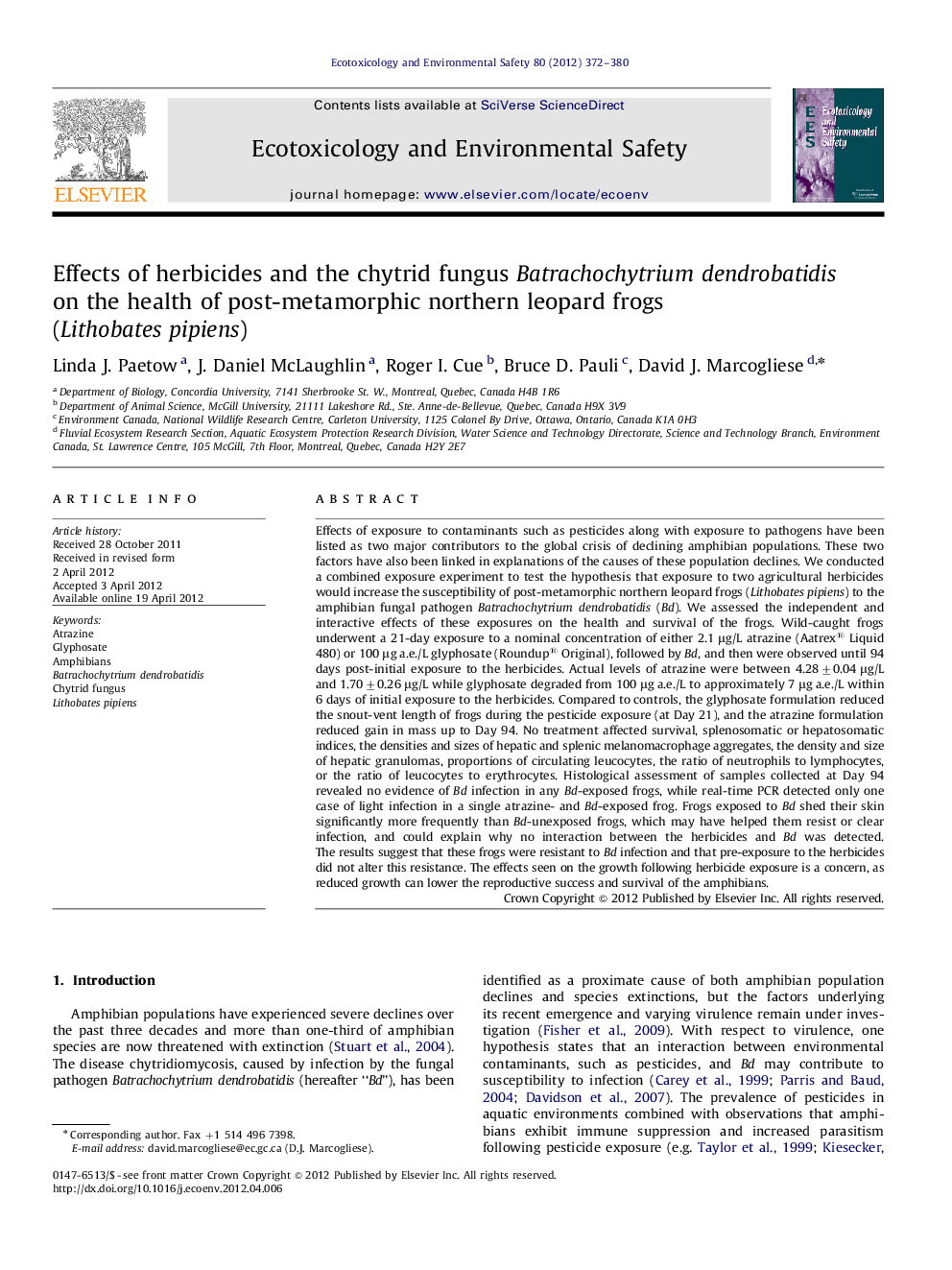| کد مقاله | کد نشریه | سال انتشار | مقاله انگلیسی | نسخه تمام متن |
|---|---|---|---|---|
| 4420707 | 1618983 | 2012 | 9 صفحه PDF | دانلود رایگان |

Effects of exposure to contaminants such as pesticides along with exposure to pathogens have been listed as two major contributors to the global crisis of declining amphibian populations. These two factors have also been linked in explanations of the causes of these population declines. We conducted a combined exposure experiment to test the hypothesis that exposure to two agricultural herbicides would increase the susceptibility of post-metamorphic northern leopard frogs (Lithobates pipiens) to the amphibian fungal pathogen Batrachochytrium dendrobatidis (Bd). We assessed the independent and interactive effects of these exposures on the health and survival of the frogs. Wild-caught frogs underwent a 21-day exposure to a nominal concentration of either 2.1 μg/L atrazine (Aatrex® Liquid 480) or 100 μg a.e./L glyphosate (Roundup® Original), followed by Bd, and then were observed until 94 days post-initial exposure to the herbicides. Actual levels of atrazine were between 4.28±0.04 μg/L and 1.70±0.26 μg/L while glyphosate degraded from 100 μg a.e./L to approximately 7 μg a.e./L within 6 days of initial exposure to the herbicides. Compared to controls, the glyphosate formulation reduced the snout-vent length of frogs during the pesticide exposure (at Day 21), and the atrazine formulation reduced gain in mass up to Day 94. No treatment affected survival, splenosomatic or hepatosomatic indices, the densities and sizes of hepatic and splenic melanomacrophage aggregates, the density and size of hepatic granulomas, proportions of circulating leucocytes, the ratio of neutrophils to lymphocytes, or the ratio of leucocytes to erythrocytes. Histological assessment of samples collected at Day 94 revealed no evidence of Bd infection in any Bd-exposed frogs, while real-time PCR detected only one case of light infection in a single atrazine- and Bd-exposed frog. Frogs exposed to Bd shed their skin significantly more frequently than Bd-unexposed frogs, which may have helped them resist or clear infection, and could explain why no interaction between the herbicides and Bd was detected. The results suggest that these frogs were resistant to Bd infection and that pre-exposure to the herbicides did not alter this resistance. The effects seen on the growth following herbicide exposure is a concern, as reduced growth can lower the reproductive success and survival of the amphibians.
► We investigate whether two herbicides increase frog susceptibility to the fungal pathogen, Batrachochytrium dendrobatidis (Bd).
► We find no evidence of this, but each herbicide reduced frog growth.
► Reduced growth in amphibians can lower their reproductive success and survival.
► Frogs exposed to Bd shed their skin more often, perhaps using this as a strategy to avoid or clear infection.
Journal: Ecotoxicology and Environmental Safety - Volume 80, 1 June 2012, Pages 372–380